Lemminkainen: Mythical War-Hero Of Finnish Great Epic ‘Kalevala’
A. Sutherland - AncientPages.com - Lemminkainen is a prominent figure in Finnish mythology. He is a handsome young man, a hero, but also a frivolous, ostentatious character with liking for women and battles.
Lemminkainen is one of the heroes of the ‘Kalevala’, a 19th-century national epic compiled by Elias Lönnrot, a Finnish physician, philologist and collector of traditional Finnish oral poetry.
There are many versions of the original Lemminkainen story because his complex character, is a mix of traits originating from several other personalities of oral Finnish poetry.
The original Lemminkäinen in mythology, is a shamanistic figure, but in many different stories, his roles and experiences frequently change.
In one, the hero arrives at Pohjola (or Finnish pohja - 'base, bottom'), the most extreme North, described as a dark place, a forever cold land far in the north. 'Kalevala's author, Lönnrot interprets Pohjola as a real region inhabited by Sami people or Finns.

In one myth, he drowns in the river of Tuonela (the underworld) in trying to capture or kill the black swan
In the ‘Kalevala’, on the other hand, Pohjola is the home of women - 'the daughters of Pohjola' - whom the male heroes, from the land of Kalevala, seek as wives. The Mistress of Pohjola is an evil witch of great power, Louhi, who possesses a magic mill of plenty – Sampo - that the great blacksmith Seppo Ilmarinen, the Eternal Hammerer, forged at her request as a payment for the hand of her daughter in marriage.
She locks it in a vault deep underground.
It is said that the mill churns out abundance; the churning lid of this magical mill also symbolizes the celestial vault of the heavens, embedded with stars and revolving around a central axis or the pillar of the world.
Therefore, it has been suggested that this magical device could have bee, for example, an astrolabe, world tree, or a compass.
At Pohjola, Lemminkainen has not much luck, he is killed, torn to pieces and thrown into the River of the Dead at Tuonela, which is the Land of the Dead (Underworld) in Finnish mythology, similar to the Greek Hades.
His mother retrieves the parts of her son’s body and revives him using magic.

Sampo has been stolen Sampo from Pohjola. The witch Louhi is furious and fights in the guise of a large eagle. image: Creative commons /Public domain
However, this brave warrior and an adventurer in every sense, is also a true trouble maker. Uninvited to the wedding at Pohjola, Lemminkainen takes his revenge. In a duel with blades, our troublesome hero kills the master of Pohjola, who loses his head to Lemminkäinen's blade. The Mistress of Pohjola, Louhi summons more than a thousand of soldiers to march against Lemminkäinen and his home. Lemminkäinen flees Pohjola.
He is involved in many incidents and must find a way to solve all problems he encounters.
The ‘Kalevala’ great Finnish epic and its many heroes, warriors and people who use magical or supernatural powers remind us of mythical figures from other famous mythologies.
Written by – A. Sutherland AncientPages.com Staff Writer
Copyright © AncientPages.com All rights reserved. This material may not be published, broadcast, rewritten or redistributed in whole or part without the express written permission of AncientPages.com
Expand for referencesReferences:
Honko, Religion, Myth, and Folklore in the World's Epics
Lönnrot, The Kalevala
More From Ancient Pages
-
 On This Day In History: Statue of Liberty Arrived In New York Harbor – On June 17, 1885
News | Jun 17, 2016
On This Day In History: Statue of Liberty Arrived In New York Harbor – On June 17, 1885
News | Jun 17, 2016 -
 Were Mysterious Giant Ancient Mustatils In Saudi Arabia Used For Ritual Purposes?
Archaeology | Mar 16, 2023
Were Mysterious Giant Ancient Mustatils In Saudi Arabia Used For Ritual Purposes?
Archaeology | Mar 16, 2023 -
 Tooth Analysis Reveal Nebraska Resembled A Dry Savanna 18 Million Years Ago
Archaeology | Jun 8, 2022
Tooth Analysis Reveal Nebraska Resembled A Dry Savanna 18 Million Years Ago
Archaeology | Jun 8, 2022 -
 Mysterious High-Energy Particles Detected In Antarctica – Evidence Of Ancient Nuclear Technology Or Something More Frightening?
Featured Stories | Sep 11, 2019
Mysterious High-Energy Particles Detected In Antarctica – Evidence Of Ancient Nuclear Technology Or Something More Frightening?
Featured Stories | Sep 11, 2019 -
 Controversial Hollow Earth Theory – Startling Discoveries And Different Conclusions – Part 2
Featured Stories | Jun 25, 2019
Controversial Hollow Earth Theory – Startling Discoveries And Different Conclusions – Part 2
Featured Stories | Jun 25, 2019 -
 New Cosmic Ray Bombardment Of The Great Pyramid – Search For The Hidden Chamber Continues
Archaeology | Jan 20, 2020
New Cosmic Ray Bombardment Of The Great Pyramid – Search For The Hidden Chamber Continues
Archaeology | Jan 20, 2020 -
 Spir Mountain Cairns: Prehistoric Ancient Monuments To The Dead In Northern Sweden
Featured Stories | Jan 12, 2022
Spir Mountain Cairns: Prehistoric Ancient Monuments To The Dead In Northern Sweden
Featured Stories | Jan 12, 2022 -
 Unexpected And Surprising Results Of Ancient DNA Study – Who Were The First People In South America?
Archaeology | Nov 2, 2022
Unexpected And Surprising Results Of Ancient DNA Study – Who Were The First People In South America?
Archaeology | Nov 2, 2022 -
 Is The Legendary Tsuchinoko Real?
Featured Stories | Aug 21, 2019
Is The Legendary Tsuchinoko Real?
Featured Stories | Aug 21, 2019 -
 Ancient Civilizations Invented Alcohol 10,000 Years Ago
Ancient History Facts | Sep 13, 2016
Ancient Civilizations Invented Alcohol 10,000 Years Ago
Ancient History Facts | Sep 13, 2016 -
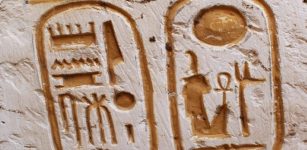 Palace Located Inside Ancient Temple Of Ramses II Discovered In Abydos, Egypt
Archaeology | Apr 1, 2019
Palace Located Inside Ancient Temple Of Ramses II Discovered In Abydos, Egypt
Archaeology | Apr 1, 2019 -
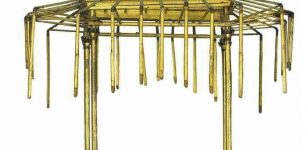 Was Tutankhamun’s Chariot Equipped With Its Own Sunshade?
Archaeology | Jun 27, 2019
Was Tutankhamun’s Chariot Equipped With Its Own Sunshade?
Archaeology | Jun 27, 2019 -
 Ancient Native Americans’ Encounter With The Star People – An Otherworldly Rescue?
Featured Stories | Jul 20, 2021
Ancient Native Americans’ Encounter With The Star People – An Otherworldly Rescue?
Featured Stories | Jul 20, 2021 -
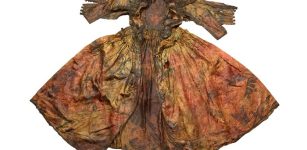 Unique 17th Century Silk Dress Found At Bottom Of The Wadden Sea Goes On Display
Artifacts | Jul 29, 2023
Unique 17th Century Silk Dress Found At Bottom Of The Wadden Sea Goes On Display
Artifacts | Jul 29, 2023 -
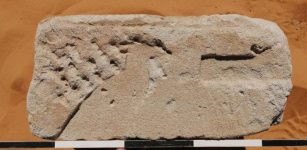 Hieroglyphs Discovered In Sudan’s Old Dongola – Once Important City Of Nubia
Archaeology | Mar 6, 2023
Hieroglyphs Discovered In Sudan’s Old Dongola – Once Important City Of Nubia
Archaeology | Mar 6, 2023 -
 Ancient Wooden Sculpture Unearthed In Peru’s Chan Chan
Archaeology | Jul 12, 2022
Ancient Wooden Sculpture Unearthed In Peru’s Chan Chan
Archaeology | Jul 12, 2022 -
 Birch Bark Tar Production Techniques Offer Evidence Neanderthals Had Cognitive Skills Similar To Modern Thinking
Archaeology | Sep 26, 2023
Birch Bark Tar Production Techniques Offer Evidence Neanderthals Had Cognitive Skills Similar To Modern Thinking
Archaeology | Sep 26, 2023 -
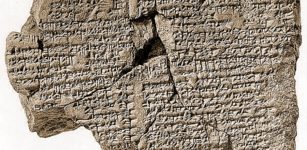 Utukku Lemnutu: Incantations Used As Therapy In Mesopotamia
Archaeology | Oct 25, 2016
Utukku Lemnutu: Incantations Used As Therapy In Mesopotamia
Archaeology | Oct 25, 2016 -
 Cave Of The Stone Sepulcher – ‘Actun Tunichil Muknal’ And Its Dark History
Featured Stories | Mar 22, 2019
Cave Of The Stone Sepulcher – ‘Actun Tunichil Muknal’ And Its Dark History
Featured Stories | Mar 22, 2019 -
 Ancient Underwater ‘Lion City’ Rests Beneath The Thousand Island Lake
News | Feb 11, 2014
Ancient Underwater ‘Lion City’ Rests Beneath The Thousand Island Lake
News | Feb 11, 2014



